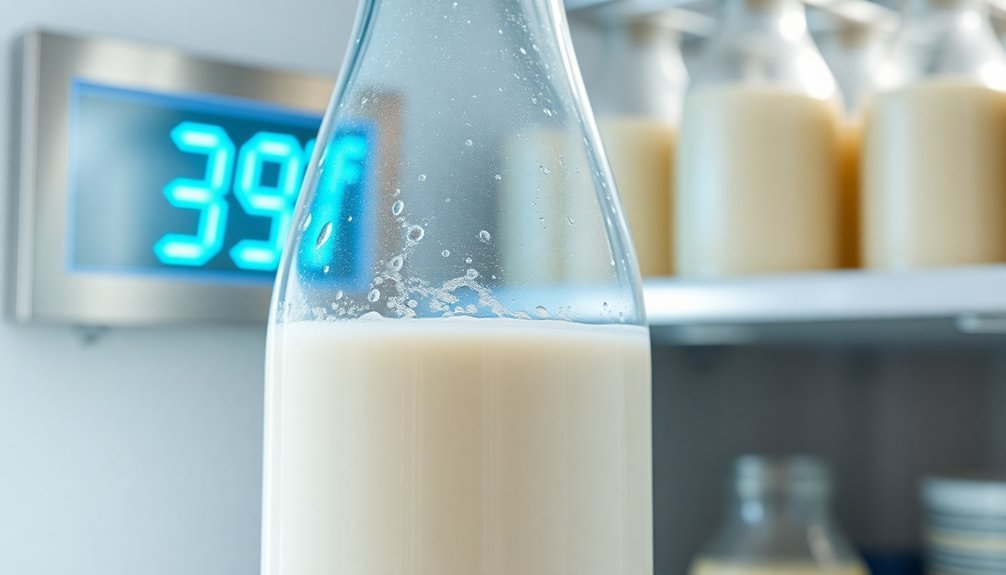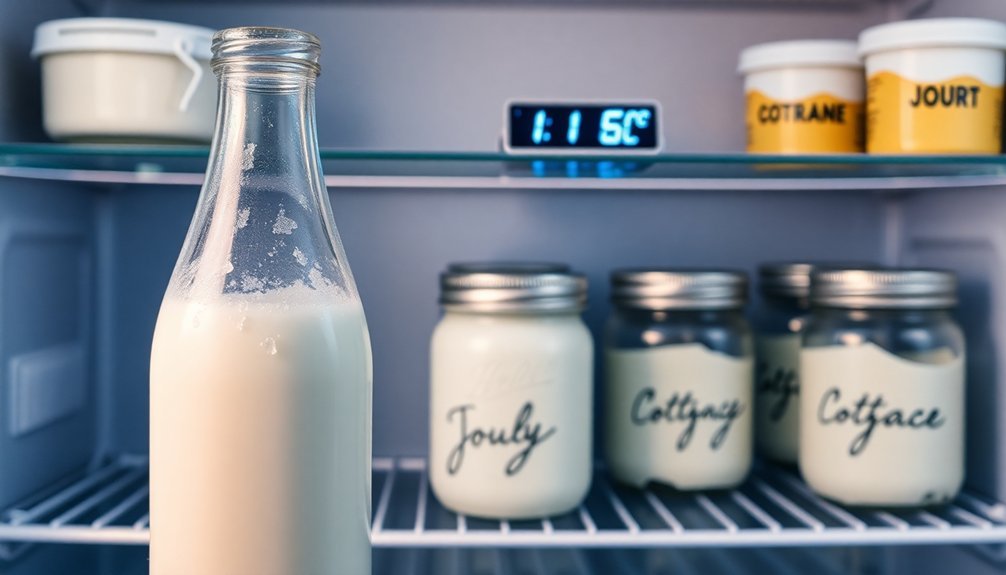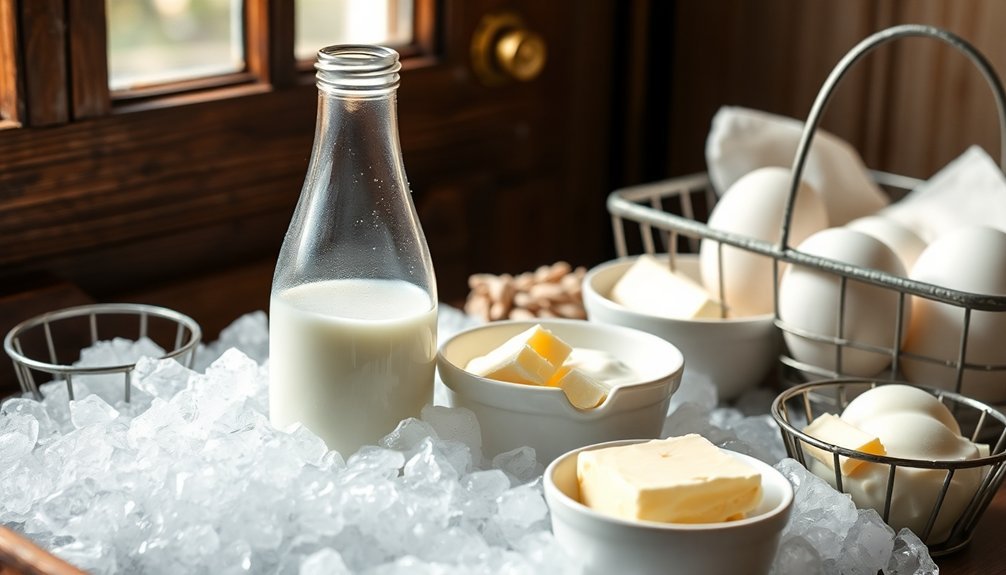You'll keep your dairy products fresh and delicious by mastering three essential storage techniques that professional chefs rely on daily. First, maintain your refrigerator's temperature between 2-4°C and store dairy at the back, never in the door. Second, always keep dairy in its original container – glass and plastic provide the best protection against off-flavors and temperature fluctuations. Third, if you need to freeze dairy, use freezer-safe containers with proper headspace and thaw gradually in the refrigerator for ideal results. These time-tested methods will help you prevent waste and extend freshness, but there's even more to discover about proper dairy storage.
The Magic of Proper Temperature

To protect your dairy, store it in the back of your refrigerator, where it's coldest.
Don't make the common mistake of keeping milk in the door – it's subjected to warm air every time you open the fridge.
For optimal freshness, maintain temperatures between 2°C and 4°C.
Return dairy products to the refrigerator immediately after use, and monitor your fridge's temperature regularly.
If your dairy has been above 40°F for more than two hours, you'll need to discard it to guarantee your family's safety.
Original Containers Matter Most
While it might be tempting to transfer your dairy products into different containers, keeping them in their original packaging helps maintain their freshness and quality. Each type of packaging material has been specifically chosen to protect your dairy products in different ways.
Glass containers are your best bet for preserving milk's natural taste, as they don't alter the flavor and provide excellent insulation. They'll keep your milk colder longer and don't interact with the product inside. Research conducted at North Carolina State University has validated these findings through extensive testing.
If you're looking for convenience, plastic containers made from HDPE, LDPE, or PET offer good protection while being lightweight and durable. They'll shield your milk from air, light, and microorganisms effectively.
You'll want to be more cautious with paperboard cartons, as they don't preserve freshness as well as glass or plastic. Research shows that milk stored in paperboard can develop off-flavors and absorb compounds from both the packaging and the surrounding refrigeration environment.
This is especially true for skim milk, which is more susceptible to flavor changes than whole milk. When possible, choose glass or plastic containers for peak freshness and taste preservation.
Smart Freezing Strategies

Smart planning makes freezing dairy products a breeze. Start by choosing the right container – you'll want to skip the original carton and opt for freezer-safe, BPA-free containers or ice cube trays for smaller portions. Properly stored milk can maintain optimal nutritional value for several months in the freezer.
When you're freezing milk, leave 1 to 1.5 inches of headspace to prevent container damage from expansion. You'll get better results with skim milk, as higher-fat varieties tend to separate more when thawed.
For peak quality, use your frozen milk within the first month, though it can last longer. Place containers at the back of your freezer where temperatures remain most stable, and don't forget to label everything with dates.
When it's time to thaw, you've got options. The safest method is letting milk defrost in your fridge for 24-36 hours. If you're in a hurry, submerge the container in cold water, changing it every 30 minutes.
For immediate use, you can microwave in 15-second intervals, but you'll need to use it right away. Once thawed, give your milk a good shake to restore its texture – separation is normal and doesn't affect nutritional value.
Frequently Asked Questions
How Long Can Dairy Products Sit Out During a Power Outage?
You'll need to discard your dairy products if they've been above 40°F (4°C) for more than 2 hours. Keep your refrigerator door closed and use a thermometer to monitor the temperature during outages.
Can I Store Different Types of Cheese Together in the Same Container?
You can store different cheeses together, but you'll need to wrap each type separately in cheese paper or storage bags. This prevents flavor mixing and maintains proper moisture levels for each variety.
Does Storing Dairy Products Near Strong-Smelling Foods Affect Their Taste?
Yes, your dairy products will absorb odors from strong-smelling foods nearby, affecting their taste. You'll want to keep milk and other dairy items away from foods like seafood and pungent cheeses in your fridge.
Should Butter Be Kept in a Butter Dish at Room Temperature?
You can keep butter in a room temperature dish for 1-2 days, but you'll want to use a butter bell or crock for longer freshness. For best results, refrigerate when not actively using it.
How Do I Prevent Yogurt From Developing Excess Liquid on Top?
You'll prevent excess liquid by heating milk to 180°F, holding it there for 15 minutes, cooling to 110°F, using fresh starter cultures, and maintaining steady incubation temperature. Don't disturb the yogurt while it sets.
In Summary
You'll extend the life of your dairy products by following these proven methods. Keep your refrigerator at the ideal temperature, don't transfer products from their original containers, and freeze strategically when needed. With these simple habits, you'll waste less food and save money. Remember: proper dairy storage isn't just about freshness – it's about making smart choices for your household budget and the environment.





Leave a Reply